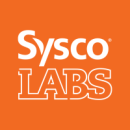Change is unavoidable.
But to say change is certain doesn’t mean it’s bad. It pushes humans to evolve, and often, they emerge stronger on the other side. The key lies in trusting one’s leaders.
From Gandhi to Ginsburg, every revolution has one, and the dynamic of today’s tech sector is no different — AI and e-commerce continue to revolutionize our world. And while many employees strive to create change, adapting to it is a different story.
In the last few years especially, it’s been common for employees to admit they’re struggling with change management. Whether it be a workforce reduction, a change in strategy or a return to office, it is a leader’s role to guide their team through these changes by keeping morale up and helping team members adjust.
Take Sysco LABS, a technology-focused division within Sysco that has been no stranger to change. Built In Austin recently sat down with Deployment Senior Manager Kurt Wightman to discuss how strong leadership is essential to long-term success.
Sysco LABS is helping to reimagine the e-commerce experience for the food service industry.
How has your company experienced change over the past year, and how has this affected you or your team?
Like everyone in the industry, we’ve experienced many changes this year — staffing challenges, shifting work between teams, the return to hybrid working — and while my team was remote prior to the pandemic, we have felt some of the challenges faced by other teams we work closely with.
What’s helped mitigate the challenges that come with change is committed leaders.
If leaders don’t seem on board, why should their direct reports be?
Strong leadership through any change is the most important aspect of change management and adoption.
How has your leader helped you stay engaged and motivated?
Where agility is required, change is a fast follower. Leaders must ensure their teams, are prepared to move, adjust and react. That often starts with open, honest and earnest communication.
Where agility is required, change is a fast follower.”
I’m very fortunate that the team I’m on is very close. As such, we’re very candid with each other about challenges we might be facing.
While some challenges can bring negativity, our leaders do a great job of level-setting, prioritizing and getting us all on the same page to bring what seems like the enormity of a challenge back to the reality of its execution.
That means our leaders are hands on, working alongside us to proactively identify pain points, uncover long-term changes, and guide us through the best way of navigating them.
Once a project or release is out the gate, celebrating our successes and reminding us of recent wins can help put in perspective that these challenges are just speed bumps, not brick walls.
Maintaining a positive attitude as a leader is integral to ensuring your team starts and stays on the right foot through change.
How has your leader helped you adjust to new ways of working?
Very rarely is a challenge that I’m experiencing isolated to just myself. Opening up to others can provide broader insight into how others have navigated the current situation or a similar situation in the past.
When change is on the horizon, my leader suggests we look back at the change our team has gone through — and found success in — in the past. This builds confidence and camaraderie and reminds us that, together, we can do it.
But while some changes may be universally applied across a team, their impacts can affect individuals uniquely. My leader listens to the challenges of each team member and strives to make them feel as comfortable as possible.
Through regular one-on-one meetings, they check in on my comfort level with said change and help me navigate new ways of working at our organization.
Building those trusting relationships and keeping communication lines open has been key. Concerns or challenges can be addressed. Leaders and peers can help support you. Major concerns can be voiced up the leadership ladder.
It pays to work together. Don’t work in a silo — unless you are Chip and Joanna Gaines.







